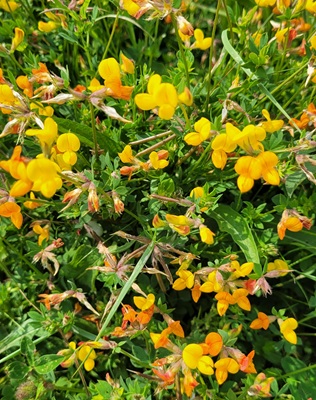Flower Properties
| Property | Value |
|---|---|
| English Name | Bird's Foot Trefoil |
| MainColor | Yellow |
| PlantType | |
| Growth Type | |
| Season | May |
| ImageUrl | Lotus-001 |
| Photographer | DP |
| Location | |
| Human Toxicity |
Flower Details
Description
Bird’s-foot trefoil is a low-growing, cheerful wildflower with clusters of bright yellow, sometimes orange-tinged flowers, resembling a bird’s foot in shape. It's a valuable nitrogen-fixer in soil and supports many insects, including bees and butterflies.
Distribution
Native to the UK and Europe, it’s commonly found in grasslands, meadows, verges, and dunes. It thrives in well-drained, nutrient-poor soils and is often included in wildflower mixes to support pollinators.
Medicinal/Other Uses

In folk medicine, it has been used mildly as a sedative or to calm anxiety, though scientific evidence is limited. It was sometimes added to herbal teas in small amounts.
Edibility
Generally not used as food for humans, though it is a valuable forage plant for livestock and wild animals. Contains small amounts of cyanogenic compounds, which can be toxic in large quantities if eaten raw.
Human Toxicity

Though not dangerous in wildflower patches, consuming large quantities of the raw plant is not advised due to the potential presence of cyanogenic glycosides, especially in stressed or wilted plants.
Pet Toxicity
Not Toxic
Active Compounds
Contains flavonoids, tannins, and cyanogenic glycosides. These contribute to its role in herbal traditions and its defensive properties in nature.
